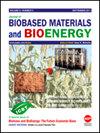Danshen-Chuanxiongqin Injection for Enhanced Management of Neurological Function in Elderly Patients with Acute Ischemic Stroke
IF 0.5
4区 医学
引用次数: 0
Abstract
This study investigates the pharmacological properties of Danshen-Chuanxiongqin Injection and the impact of an evidence-based nursing model based on an innovative diffusion theory framework on neurological function in elderly patients with acute ischemic stroke. The stability of the injection was assessed via ultra-high-performance liquid chromatography coupled with quadrupole/orbitrap high-resolution mass spectrometry. The pharmacological properties of the injection were evaluated in three groups of rats: Group A (Cold coagulation and blood stasis), Group B (Blood stasis with sthenia), and Group C (Normal control). Groups A and B were further divided into subgroups receiving either physiological saline or the injection, followed by an analysis of hemorheological parameters. 200 elderly patients with acute ischemic stroke were divided into two groups: a control group (evidence-based nursing model based on the innovative diffusion theory framework) and an observation group (Danshen-Chuanxiongqin Injection+evidence-based nursing model based on the innovative diffusion theory framework). Medication quality was confirmed using SPSS 26.0. In animal experiments, Group B displayed improved hemorheology, adverse drug reaction, and thyroidstimulating hormone levels (P < 0.05). The observation group exhibited reduced post-treatment plasma renin activity, angiotensin II, aldosterone, and norepinephrine. At the treatment end and 6-month follow-up, the observation group showed significantly improved neurological function (P < 0.05). The injection demonstrated stable pharmacological properties with a cooling effect, effectively treating blood stasis with sthenia-related symptoms. The evidence-based nursing model with the innovative diffusion theory framework effectively enhanced neurological function, neuroendocrine hormones, clinical efficacy, and safety in elderly patients with acute ischemic stroke. This approach holds promise for further implementation and promotion.丹参川芎嗪注射液用于增强急性缺血性脑卒中老年患者的神经功能管理
本研究探讨了丹参川芎嗪注射液的药理特性,以及基于创新扩散理论框架的循证护理模式对老年急性缺血性脑卒中患者神经功能的影响。通过超高效液相色谱-四极杆/比特阱高分辨质谱法评估了注射液的稳定性。在三组大鼠身上评估了注射液的药理特性:A 组(寒凝血瘀型)、B 组(血瘀气滞型)和 C 组(正常对照组)。A 组和 B 组又分为接受生理盐水或注射的子组,然后分析血液流变学参数。将 200 名急性缺血性脑卒中老年患者分为两组:对照组(基于创新扩散理论框架的循证护理模式)和观察组(丹参-川芎嗪注射液+基于创新扩散理论框架的循证护理模式)。用 SPSS 26.0 确认用药质量。在动物实验中,B 组的血液流变学、药物不良反应和促甲状腺激素水平均有所改善(P < 0.05)。观察组在治疗后血浆肾素活性、血管紧张素 II、醛固酮和去甲肾上腺素均有所降低。在治疗结束和 6 个月的随访中,观察组的神经功能明显改善(P < 0.05)。该注射液药理作用稳定,具有降温作用,能有效治疗血瘀证的呆滞相关症状。创新扩散理论框架下的循证护理模式有效提高了老年急性缺血性脑卒中患者的神经功能、神经内分泌激素、临床疗效和安全性。该方法有望得到进一步实施和推广。
本文章由计算机程序翻译,如有差异,请以英文原文为准。
求助全文
约1分钟内获得全文
求助全文

 求助内容:
求助内容: 应助结果提醒方式:
应助结果提醒方式:


